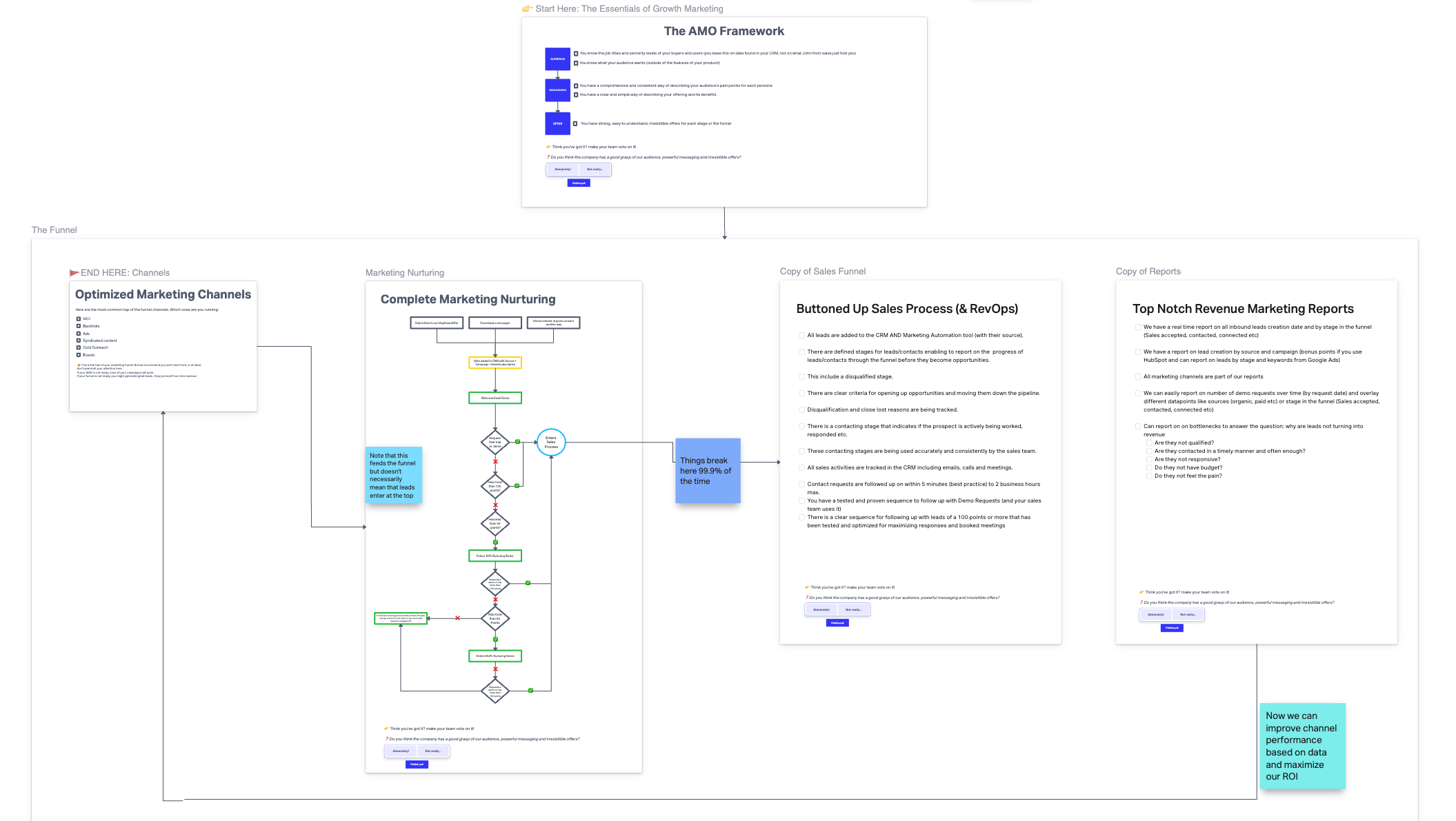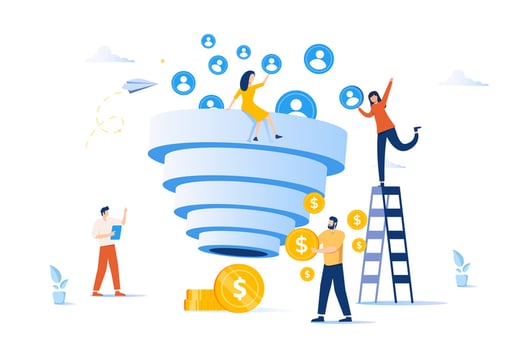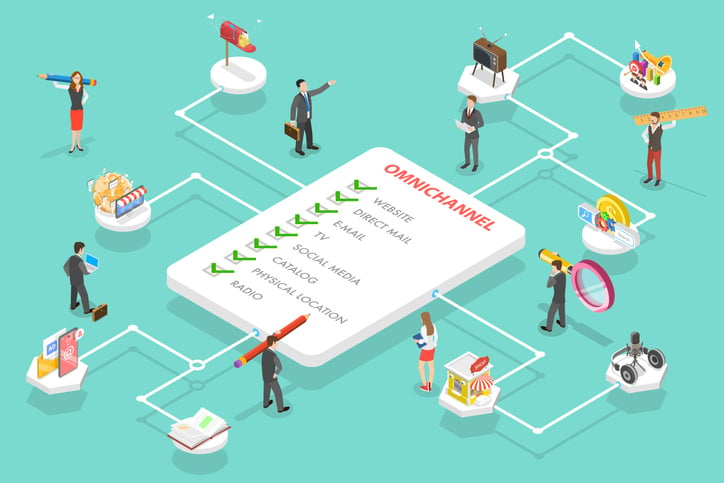Growth marketing has steadily been gaining interest for B2B companies everywhere. According to Google Trends data, the term is going to reach peak interest both in the U.S. and worldwide this quarter.
It's unsurprising, given that the term moved marketing from being a cost center charged with producing brochures and managing conference sponsorships into a true driver of growth.
The problem is that too many companies still fall short of having their marketing activities fuel their revenue. But why?
After years spent embedded in growth marketing working with companies of all sizes, I’ve noticed one mistake that keeps cropping up for B2B organizations that prevents them from scaling and driving revenue: they don’t have the right growth marketing framework. Or worse, they don’t have a framework at all.
Instead, the marketing of many businesses is a piecemeal solution, with a channel here, a channel there, and no visibility in the whole funnel (and its major bottlenecks).
When marketing efforts inevitably don’t work out, they blame the channel. If it continues not to work, they blame their marketing team. Eventually, they fire their team, hire somebody new, and the vicious cycle starts again.
This won’t work. (Shocking, I know.)
So, what can you do instead? Steal this proven funnel framework, courtesy of the ProperExpression team:

If it feels like a lot, we’ve got you covered. Read on for a step-by-step guide on implementing this surefire growth marketing framework that will start proving marketing return on investment (ROI) in no time.
4 Steps to Implement Your New Growth Marketing Framework
1) Tackle Your Sales Funnel

Alright, it might feel counterintuitive to tackle sales first in a growth marketing engine, but let's face it. If your sales process is broken, or at least not-marketing ready, investing in marketing is the equivalent of setting a big pile of cash on fire.
And in 99% of cases, sales processes are not ready for marketing leads. Let's break down how to button up your sales funnel so it can make maximum impact:
- All leads are entered into one centralized CRM
- There are defined stages for leads and contacts, enabling reporting on their progress through the funnel before they become opportunities
- There is a contacting stage that indicates if the prospect is actively being worked on and responded to
- There are clear criteria for opening up opportunities and moving them down the pipeline so all sales reps are on the same page (and don’t just make things up as they go along...)
- Disqualification and closed lost reasons are being tracked
- All sales activities are tracked in the CRM, including emails, calls, and meetings
- Contacts requests are followed up on within 5 minutes (that’s the best practice!), up to 2 business hours maximum
- There’s a clear sequence for following up with a contact request that has been tested and optimized for maximizing responses and booked meetings
- There is a clear sequence for following up with leads of 100 points or more that has been tested and optimized
By following this checklist, you’ll have the basics for a smooth sales funnel that’s ready for leads, no matter where they come from. From our experience, most companies only do three of these things right, maximum. You’ll stand out by doing all of them.
A quick note on sales sequences:
Personalization is so important. But that doesn't mean you should hand your 22-year-old SDR the keys to the castle, especially when booking a call with a warm lead.
Spend time figuring out an email follow-up that works, and use it within 5 minutes, 100% of the time.
As a bonus, just for you: here’s our favorite email template for an effective sales sequence.
2) Start on Your Marketing Automation & Lead Funnels
Now that your sales funnel is taken care of, it’s time to ensure your marketing automation and lead funnels are up to par. And yes, I know you're wondering when I’ll finally talk about growth channels. I get it.
But hear me out: 90% of companies pour money into lead gen that fills in a very leaky funnel. So, my advice is to fix your funnel, then fill it.
Here's what it’s going to take:
- One centralized marketing automation tool that either has a sales CRM (like HubSpot, which is by far our favorite) or has a one-on-one sync with a sales CRM (once again, HubSpot wins, even if you use Salesforce for sales). Regardless of your chosen tool, make sure it comes with powerful revenue operation (RevOps) and reporting features.
- Clearly defined lead statuses: You can find the baseline lead statuses we recommend to all clients at the top of our 12 Must-Have Workflows to Implement in Your Growth Marketing Automation Software blog.
- Lead scoring: Automatically assign scores to leads based on different types of engagement (did they attend a webinar? Download an asset?) and demographics (seniority, job title, department, etc.) and firmographics (company revenue, HQ location, number of employees, industry etc.). When leads reach a certain score, they should be pushed into more personalized nurturing or handed to sales.
- An automated welcome series: Start nurturing leads the minute they perform a desired action by sending a 3-4 email welcome series introducing your company, setting expectations, and providing helpful information.
- An automated Top-of-the-Funnel (TOFU) series: Leads at the top of the funnel are in a learning and awareness stage, so send helpful content, such as blogs, that will help nurture them the minute they enter your funnel. I suggest adding your best-performing top-of-the-funnel emails, blogs, and assets to this series.
- An automated Middle-of-the-Funnel (MOFU) series: As leads move down the funnel, the automated nurturing shouldn’t stop. Send white papers, case studies, or other resources to help your leads move closer to sales.
- An automated Close Lost Series: Lost doesn’t have to mean lost forever. After an appropriate wait, have your closed lost contacts automatically enrolled in an email sequence that reaches back out with an offer to get them interested again.
- An automated win-back series: Sometimes, customers might leave you because they don’t have the resources or budget for your product or services. But that doesn’t have to mean they’re gone forever! A win-back series can reengage and reactivate churned customers through targeted messaging and incentives.
- Clear handoff to sales: Last but certainly not least, the transition from marketing to sales should be smooth, painless, and of course, automated. Sales should have access to all the information gathered throughout the marketing stage so they can take the deal home.
3) Diversify Your Growth Channels
Now that you have a system that can handle leads and push them through the funnel, you can start spending money on bringing leads in. (See, I told you we were going to get to this 😊)

Now, even with the perfect funnel, there are still a few things to consider when choosing your growth channels.
- First, you want to make sure you don’t spread yourself, your team, and your budget thin. Choose a couple of channels to begin with and focus all your efforts on them.
- Second, once you choose your channels, commit. FOMO and commitment phobia are the #1 enemies of marketing. I’m not telling you to let things run forever, but you should definitely give any strategy you're testing a good six months. Of course, you should iterate during that time. But make sure you give each campaign enough time and budget to draw conclusions.
- And lastly, make sure you choose the right channels for the right reasons. To make it easier for you, we broke down which channels are good for what purpose below.
Search ads:
-
- Pros: Search ads are great for people with intent who are looking for something in particular; this means that these folks are usually easier to close, especially if they come at the bottom of the funnel. Ads are also great for marketing with a lot of existing demand.
- Cons: With search ads, you don't control the audience and might attract the wrong people who will never buy. Although you have control over intent, you don’t control demographic.
- [Pro Tip]: Google is really tricky to manage, and unless you’re Salesforce, you probably don’t have the right team in-house to manage search ads. Hire a B2B ad agency to handle search ads on Google and Bing.
- Pros: Search ads are great for people with intent who are looking for something in particular; this means that these folks are usually easier to close, especially if they come at the bottom of the funnel. Ads are also great for marketing with a lot of existing demand.
LinkedIn:
-
- Pros: Unlike search ads, LinkedIn allows you to control demographic, though not intent. This is great if you know exactly who you’re selling to and how to resonate with them.
- Cons: Besides having no control over intent, you must also be willing to spend. The average click on LinkedIn costs $18, meaning a monthly budget of less than $3,000 is basically useless. You need to have a budget and a long-term vision for this channel.
- Pros: Unlike search ads, LinkedIn allows you to control demographic, though not intent. This is great if you know exactly who you’re selling to and how to resonate with them.
Display ads:
-
- Pros: Display ads are great for remarketing. If you already have a really large audience of people who might be interested in your product, try launching display ads.
- Cons: If you have a small database, display ads won’t help you. Plus, some people hate having ads interrupt their scrolling, so not everyone will be willing to give a click.
- Pros: Display ads are great for remarketing. If you already have a really large audience of people who might be interested in your product, try launching display ads.
SEO:
-
- Pros: Search engine optimization (SEO) is similar to search ads, but you can be broader with your search terms because you’re not paying for every single click. You can also capture people higher in the funnel who might be ready to buy.
- Cons: SEO takes a long time to build up. It’s definitely not a switch you flip overnight, so you have to be willing to invest the time and stay patient.
- Pros: Search engine optimization (SEO) is similar to search ads, but you can be broader with your search terms because you’re not paying for every single click. You can also capture people higher in the funnel who might be ready to buy.
Referral Links:
-
- Pros: Referral links are more of a growth hack; they’re quick to set up, and you can begin with Capterra, TrustPilot, and other review sites fairly easily.
- Cons: Like most growth hacks, referral links are not particularly scalable.
- Pros: Referral links are more of a growth hack; they’re quick to set up, and you can begin with Capterra, TrustPilot, and other review sites fairly easily.
Syndicated Content:
-
- Pros: Putting your content on other sites can help you receive links to your site, and some sites will even collect leads for you. This channel is great for TOFU, who are still searching for preliminary information on a topic.
- Cons: To turn these leads into real prospects, you really need to have a nurturing piece in place, or nothing will come of the people who come to you through your content on other sites.
- Pros: Putting your content on other sites can help you receive links to your site, and some sites will even collect leads for you. This channel is great for TOFU, who are still searching for preliminary information on a topic.
Events:
-
- Pros: Events are great for increasing brand visibility and awareness
- Cons: Unless your marketing budget exceeds $1 million per year (lucky you!), you probably have to choose between events and digital marketing. Doing both well on a limited budget is challenging, to say the least.
- Pros: Events are great for increasing brand visibility and awareness
Cold outreach:
-
- Pros: Through cold email, you can cherry-pick your audience and reach people who never even knew you existed within a reasonably small budget
- Cons: Cold email can be technically challenging due to deliverability and domain issues, plus copy has to be incredibly targeted, or else campaigns won’t work.
- Pros: Through cold email, you can cherry-pick your audience and reach people who never even knew you existed within a reasonably small budget
4) Finish Off with Strong Reporting
Good reporting tells you which channels and campaigns give you traffic, leads, demo requests, sales meeting, deals, and revenue.
Without reporting, you can’t see where this complex framework might break. Because, in truth, not everything will flow perfectly all the time; that’s the nature of marketing and sales.
So beyond giving you something pretty impressive to show off in board meetings, reporting is the best way to visualize where you have bottlenecks in your system and throughout your funnel so you can fix them and increase growth.
If you don’t have that, you’ll get stuck in a rut that can’t be improved.
Here are things you should absolutely have in your reporting:
- Channel Reports: What channels are creating net new leads, and what channels are converting existing leads into sales opportunities? For example, you could create a lead through ads and convert them to a demo request through a marketing email. Tracking both is essential.
- Funnel Progression Reports: How are your leads progressing through the funnel from new lead, to marketing qualified, to sales qualified, to opportunity, to revenue? You should be able to understand the bottlenecks. Are the leads qualified? Are they connecting with sales? Are they closing? And if not, why?
- Sales Activity Reports: What’s your time to first response? What's your connection rate? Are some reps better at closing inbound leads than others?
- Revenue Reports: Again, it’s ideal to break this down by what created the contacts and what created the deal, as these are the two most important touch points in your funnel!
Growth Marketing Framework: The Conclusion
So, there you have it! If it still feels like a lot, remember this:
- You don’t have to implement all of this at once.
- Or (get ready for the shameless plug here) you can also enlist the help of a Growth Marketing Agency... like ProperExpression.






